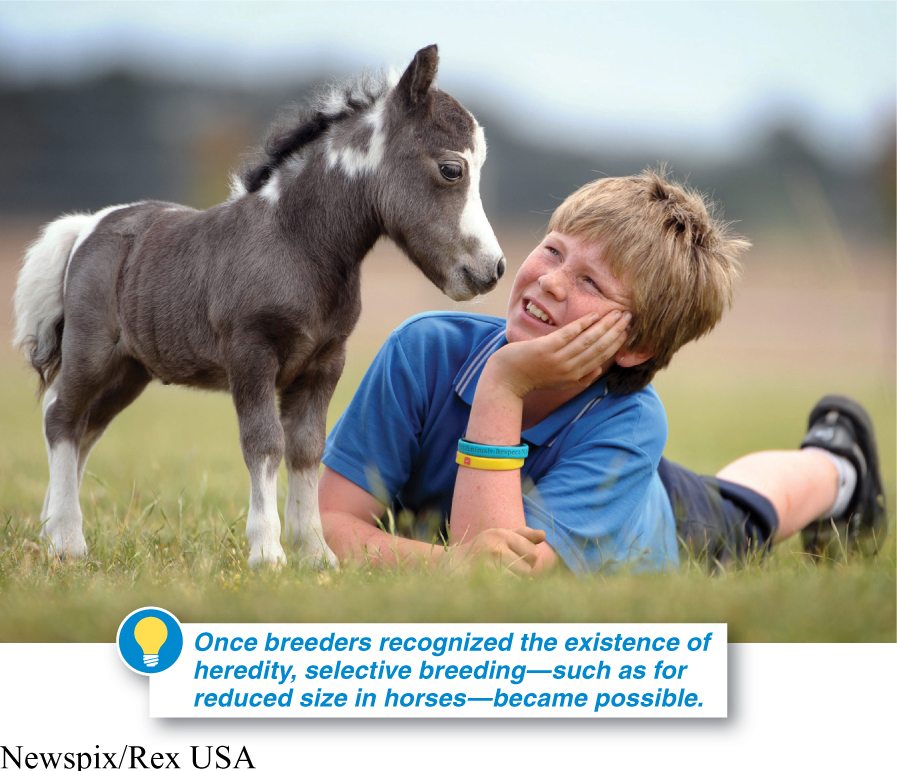7.2: Some traits are controlled by a single gene.
Like father, like son. No one will ever seek a paternity test to prove that Jaden Smith is the son of Will Smith. All it takes is a quick look at the facial features shared by the two actors and we are sure they are related (FIGURE 7-4). We see all around us that offspring generally resemble their parents more than they resemble other random individuals in the population—

Observing heredity is easy. Elucidating how it works is not. For thousands of years before the mechanisms of heredity were discovered and understood, plant and animal breeders recognized that there is a connection from parents to offspring across generations. In ancient Greece, for example, the poet Homer extolled the tremendous benefits to society that came from the skillful breeding of horses. The awareness of beneficial breeding practices enabled farmers to systematically create strains of crops, livestock, and even pets with desirable traits (FIGURE 7-5).

Once breeders recognized the existence of heredity, they began selecting individual plants or animals with the desired traits to breed with each other, in the hope that the offspring would also have those desirable traits. Since then, it has been possible to create a rich world of sweeter corn, loyal dogs, docile livestock, beautiful flowers, and more. And these breeders did it all without ever really understanding how heredity works.
“HEREDITY
I AM the family face;
Flesh perishes, I live on,
Projecting trait and trace
Through time to times anon,
And leaping from place to place
Over oblivion.
The years-
In curve and voice and eye
Despise the human span
Of durance—
The eternal thing in man,
That heeds no call to die.”
— THOMAS HARDY, in Moments of Vision and Miscellaneous Verses, 1917
281
Practical successes were many, but people didn’t understand exactly how the outcomes were achieved. They knew the result of selective breeding, but why and how it worked, or didn’t always work, was a mystery. Patterns of similarity among related individuals are impossible to make sense of without an underlying understanding of how heredity works. This understanding is the province of the field of genetics.
Mechanisms of heredity become a bit easier to grasp when we focus on visible traits with well-

It is important to note here that most human characteristics are influenced by multiple genes, as well as by the environment. However, because the mechanism by which single-
TAKE-HOME MESSAGE 7.2
Some traits are determined by instructions that an individual carries on a single gene, and these traits exhibit straightforward patterns of inheritance.
What are single-
282